(Listen to the radio version here.)
On April 20, Duluth broke our all-time seasonal snowfall record, topping the 135.4 inches that fell the winter of 1995-1996. As of 2:30 am on April 20, we’d had 135.8 inches, exceeding the record by 0.4 inches with snow still falling. By 7 am, when the Weather Service posts the official numbers each day, the total was up to 137.1 inches.
I’m writing this in mid-afternoon on the 20th. All day we’ve been getting a wintry mix of rain, sleet, and snow. On our short drive to the library this morning, seven robins alighted momentarily on the busy road in front of Walter and me and flew off, wings and backs coated with ice. And at this very moment, with ice pelting against my windows, my yard is teeming with juncos, Fox, Song, and American Tree Sparrows, grackles, and Rusty Blackbirds. I’ve gone out several times to scatter more millet for them.
The weather has been lethal for loons. The Raptor Education Group, Inc. in Antigo, Wisconsin, posted this alert April 20:
We are getting calls on many loons on land and small ponds the past 2 days. A few loons can be a normal situation of a loon accidentally landing as a mistake. However, due to the many calls received over the past 24 hrs., it appears we may have a LOON FALLOUT occurring. That occurs when atmospheric conditions are such that the migrating loons develop ice on their body as they fly at high altitude and crash land when they are no longer able to fly due to the weight of the ice on their body or the interference with their flight ability. The current ice/rain and unstable air currents is a perfect set-up for this phenomenon to occur.
At this time loons have been seen on land in Wausau, Gleason, Stratford, Neva, Rice Lake, Antigo, Drummond....other areas may be involved as well.
Loons cannot walk! They will need your help! If you find a loon on land or on a road or cow pasture, realize that it cannot walk. Their legs are placed to the back of the bird and are made for swimming and diving not walking.
Loons can be difficult to handle. Call REGI or Loon Rescue (phone numbers below) or your local wildlife center for advice. Do NOT TAKE THEM TO SMALL PONDS FOR RELEASE!! They cannot fly from small ponds as they need a quarter mile or more of open water to run across and get airborne.
They have sharp beaks and use the beak for defense. You can cover them with a blanket to contain them. You can transport them in a Rubbermaid container with air holes in the top. Please put towels on the bottom of the container or box to cushion their V shaped keel and prevent injury.
Call REGI at 715-623-4015 or Loon Rescue at 715-966-5415
The slush is ridiculously heavy. Russ is 72 but still takes pride in shoveling the old-fashioned way, mostly to keep our carbon footprint as low as possible. As sick as we both are of all this, we’re like many Duluthians—we can’t help but feel triumphant, or at least validated, by breaking the record. See?! This winter really was bad!
But whenever one of these lethal spring ice storms happens, a handful of people continue to yell that it’s proof that climate change is fake. We’ve always had bad weather events, right? For example, on the night of March 13, 1904, heavy, wet snow hit Minnesota and Iowa. Thomas Sadler Roberts wrote:
On two small lakes, with an aggregate area of about two square miles, the ice was still intact and nearly bare from the melting snow. This exposed surface was thickly and evenly strewn with dead longspurs… A conservative calculation showed that there were at least 750,000 dead longspurs lying on these two lakes alone! The adjoining uplands, the streets of the town, and the roofs of the buildings were strewn with bodies in equal numbers. And this was only one locality in the extensive area throughout which the birds were killed.
In late March 1982, my first winter in Duluth, the snow was still very deep when Russ had a meeting in Las Vegas and we decided to use his vacation time to make it into a road trip to Arizona with our 6-month old baby—we’d be back on April 18. We still had hundreds of redpolls visiting our feeders, so I paid a little boy to keep the feeders full. I told him he could quit when the snow melted and the birds disappeared. But we came back to deeper snow and even more redpolls! Late snows up here are normal.
More disconcertingly as I adjusted to life in the north in 1982, the ice stayed out on Lake Superior into May. The ice sheet was steadily shrinking as it sloshed back and forth from one part of the lake to another with the wind. It disappeared entirely from our end of the lake when the wind was out of the northwest, but south winds on a warm front would blow it right back again. This year, despite all the snow, temperatures were mild enough that the lake didn’t freeze at all.
Climate isn’t about single winters nor any individual extreme weather events. It’s about how many more extreme weather events occur every year now. The increasing numbers of fires, floods, droughts, tornadoes, and hurricanes are making insurance companies refuse policies in more and more areas. In Alaska last year, I saw firsthand how spruce forests have worked their way far into areas that had been tundra for thousands of years, helping moose to thrive even as caribou decline.
Canada Jay adults store food all fall and winter to feed their young, who hatch in early spring. Now every year many of their nestlings die because the parents’ hoards rotted during winter thaws.
Oklahoma’s Lesser Prairie-Chicken birding festival had to be canceled permanently because droughts made it impossible to provide good viewing possibilities for the diminishing number of these splendid birds.
The effects of climate change on birds are exacerbated because of so many other kinds of human-caused mortality. How can species have a “surplus population” to bounce back from disasters when about a billion birds are killed at our windows every year, and another billion are killed by cats? And then there are habitat destruction, pesticides, declining numbers of the insects so many birds need, collisions with cars, oil spills, train derailments… The problems facing birds are so big and so deep and so tall that sometimes I despair.
But my little grandson is counting on the grownups in his life for his very future, so throwing my hands up in despair is a luxury I can’t afford. Russ and I bought a heat pump last fall—it’s saved a lot of BTUs this winter, and a lot of money on our gas bill, but because electricity is much more expensive than gas, our heating bill is actually higher, to say nothing of how expensive the heat pump was. We’re finally investing in solar panels that’ll go in this spring—they won’t pay for themselves money-wise during our lifetimes either, but these are not financial investments—they’re investments in our children’s and Walter’s future, and the future of the birds we love. As James Baldwin said, “Not everything that is faced can be changed; but nothing can be changed until it is faced.”


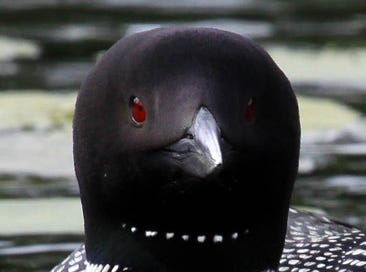


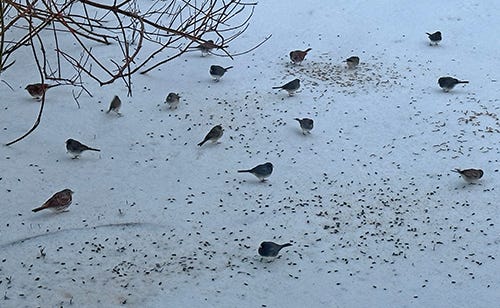


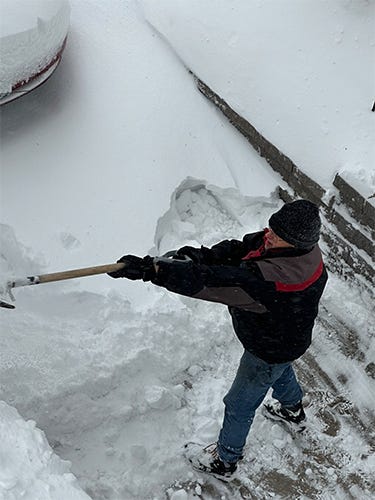
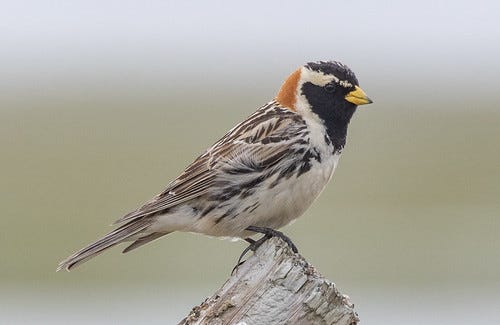
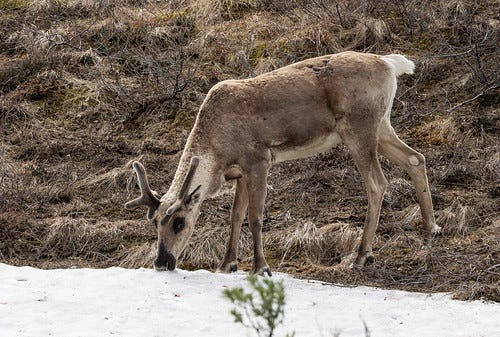
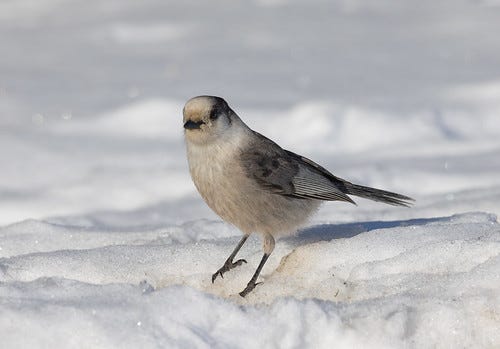
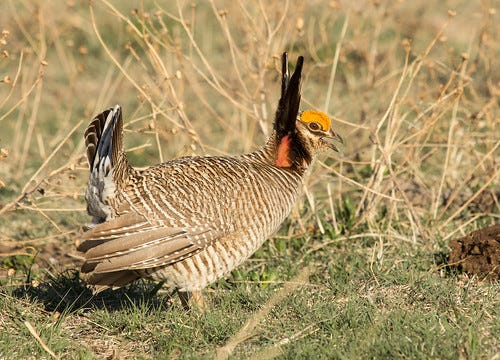
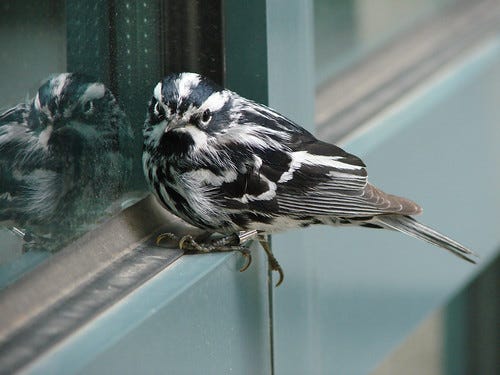
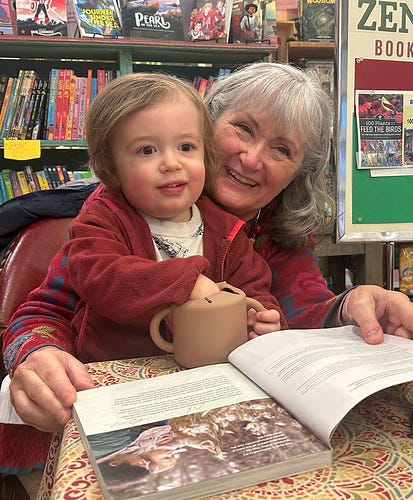
Such a wonderful photo of you and your grandson! Am so enjoying reading your blogs. Eileen